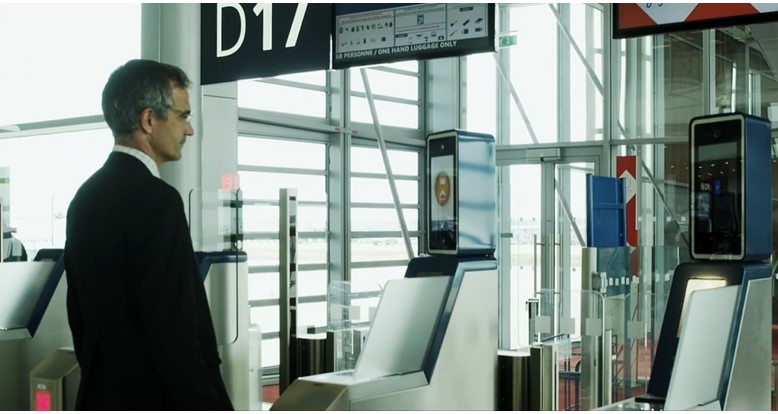 By Chris Burt
By Chris Burt
Face biometrics continue to underpin advances speeding travelers through airports, with Idemia participating in a digital ID pilot for travel and tipping the capabilities of next-generation scanners. National digital ID programs were also in the news with ID Day approaching. Kenya is starting again, Ethiopia is moving ahead, and the Philippines is getting phones with biometric technology from Totm. An interview with Onfido’s CEO and a major change by NIST were also among the week’s most read articles on Biometric Update.
Top biometrics news of the week
A pilot of Digital Travel Credentials for air travel between the Netherlands and Canada is back on, using a smartphone app from Idemia. The pilot was described during an FTE webinar featuring representatives of airlines, the TSA and CBP. The next generation of the Idemia ID scanners used in a growing number of U.S. airports will be able to accept DTCs, an executive with the company says.
The new terminal at Kansas City International Airport features capabilities for Global Entry members to use biometrics and mobile devices without physical documentation, in most cases. The extent to which trusted travellers are monitored has been revealed, meanwhile, with the discovery fine print stating that the U.S. checks all against criminal and no-fly lists every 24 hours.
Details for Kenya’s new digital ID system have been unveiled, including a September 29 launch date for Maisha Namba supported by a $6.8 million budget. The birth-to-death ID number was approved by a government committee, along with the accompanying ID card, digital signature, and unified population registry.
A Totm subsidiary has signed an MoU to work closely with a Filipino mobile phone maker to integrate biometrics and ID management products to give state-backed institutions a way to carry out KYC checks. The company plans to use its experience in Indonesia in working with the Philippines’ digital ID ecosystem.
The rollout of Ethiopia’s national digital ID, Fayda, continues with integration by the Ministry of Education as the student identification for admissions, records management, licensing and national exams. The government says the move will improve identity verification of students, as well as protection of their data.
Activist Post is Google-Free — We Need Your Support
Contribute Just $1 Per Month at Patreon or SubscribeStar
Denmark is held up by OIX as an aspirational example to the UK and other countries trying to deliver government services through digital ID. The Danish national ID has 99 percent adoption and is commonly used for access to public and financial services.
A policy guide from the G20 and the World Bank suggests how countries in the Global South can improve financial inclusion and productivity with digital public infrastructure. DPIs can lower transaction costs while increasing access to financial services, but also come with their own risks that must be planned for.
Migrants seeking refuge in Nigeria have been “instrumentalized” for political purposes with the help of biometrics, according to research by academics. The paper draws on incidents like the discovery of refugees from Niger holding biometric voter IDs in Nigeria to argue that migrants are being used to undermine the legitimacy of elections in the country.
A name on Time’s list of 100 influential people in AI familiar to observers of the facial recognition market is Inioluwa Deborah Raji. Her work on algorithmic bias is receiving recognition in Africa, and most in the industry are likely already familiar with her sincere approach to contentious policy debates.
Reusable digital identity is now the primary focus at Onfido, CEO Mike Tuchen tells Biometric Update in an interview. With the company’s plans for an IPO crushed by rising interest rates and a corresponding fall in equities market demand, Tuchen discussed the relation between ID verification orchestration and federation, and how the acquisition of Airside fits into Onfido’s goals.
NIST has divided the FRVT program into evaluations of face biometric recognition and data analysis, under the respective acronyms FRTE and FATE. The Face Recognition Technology Evaluation includes new tracks for matching multimodal and twins’ biometrics, while analysis tracks include morph detection, image quality assessment, PAD and age estimation.
Incognia CEO Andre Ferraz compares America’s new instant payment solution, FedNow, to Brazil’s Pix and India’s UPI in a Biometric Update guest post. Ferraz argues that those examples show industry collaboration is needed to ensure the benefits of FedNow are not overshadowed by fraud.
Please tell us about any insights, perspectives or content we should share with the people in biometrics and the broader digital identity community in the comments below or through social media.
Source: Biometric Update
Chris Burt is managing editor and industry analyst at Biometric Update. He has also written nonfiction about information technology, dramatic arts, sports culture, and fantasy basketball, as well as fiction about a doomed astronaut. He lives in Toronto. You can follow him on Twitter @AFakeChrisBurt.
Become a Patron!
Or support us at SubscribeStar
Donate cryptocurrency HERE
Subscribe to Activist Post for truth, peace, and freedom news. Follow us on SoMee, Telegram, HIVE, Flote, Minds, MeWe, Twitter, Gab, and What Really Happened.
Provide, Protect and Profit from what’s coming! Get a free issue of Counter Markets today.

Be the first to comment on "Biometrics Replacing IDs in Airports, Backing Them for Government Services"